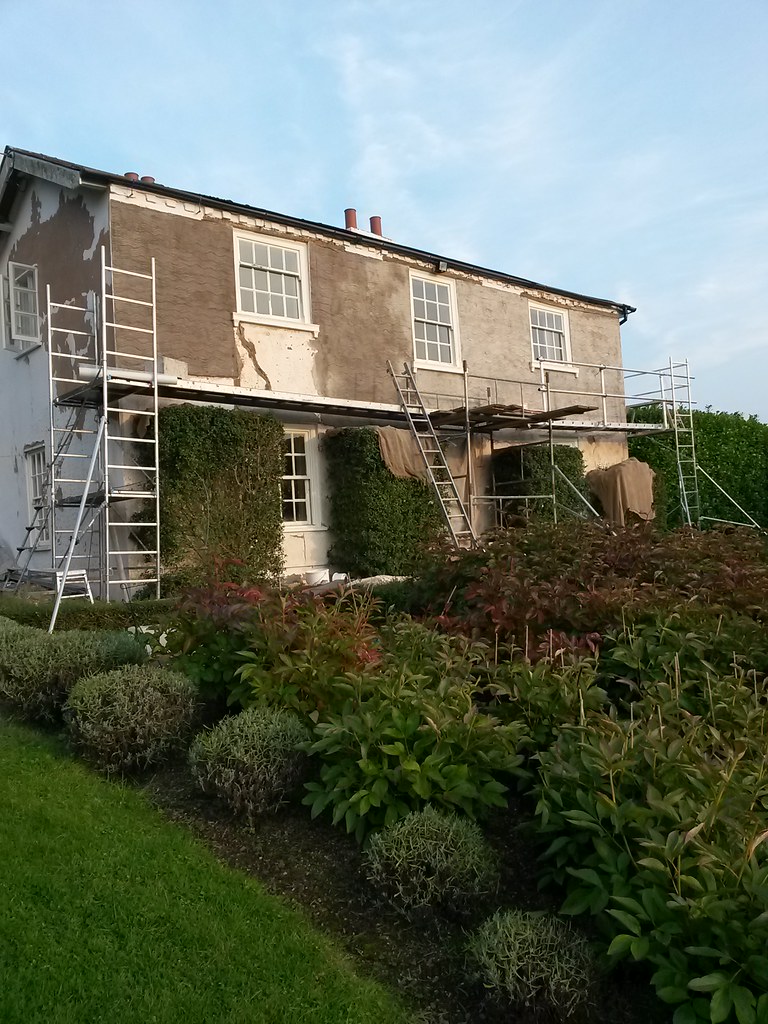RogerS
Established Member
We're having the front of our house re-rendered. The wall was prepped, cracks filled and a coat of waterproof PVA and sand to give a good key to the scratch coat.



However when he started to put the finish coat of render on, he struggled the first day because the plastering sand was quite fine and he was finding that as he was trowelling off the finish coat was starting to pull away from the scratch coat. The next day he brought some sharp sand along to mix in with the plastering sand and that made a huge improvement.
I was up on the scaffolding today and discovered quite a few 'blown' areas especially where he had the first days' problems - some of them circled in the photo below.

Now my dilemma is this. Do I get him to remove the blown areas and re-re-render. The trouble with this is that I'm concerned that these patches will then stick out like a sore thumb thus defeating the whole object. Or do I keep my fingers crossed that some good coats of paint will keep the moisture out and that the blown areas won't fall off six months down the line.
Appreciate any thoughts.



However when he started to put the finish coat of render on, he struggled the first day because the plastering sand was quite fine and he was finding that as he was trowelling off the finish coat was starting to pull away from the scratch coat. The next day he brought some sharp sand along to mix in with the plastering sand and that made a huge improvement.
I was up on the scaffolding today and discovered quite a few 'blown' areas especially where he had the first days' problems - some of them circled in the photo below.

Now my dilemma is this. Do I get him to remove the blown areas and re-re-render. The trouble with this is that I'm concerned that these patches will then stick out like a sore thumb thus defeating the whole object. Or do I keep my fingers crossed that some good coats of paint will keep the moisture out and that the blown areas won't fall off six months down the line.
Appreciate any thoughts.

































